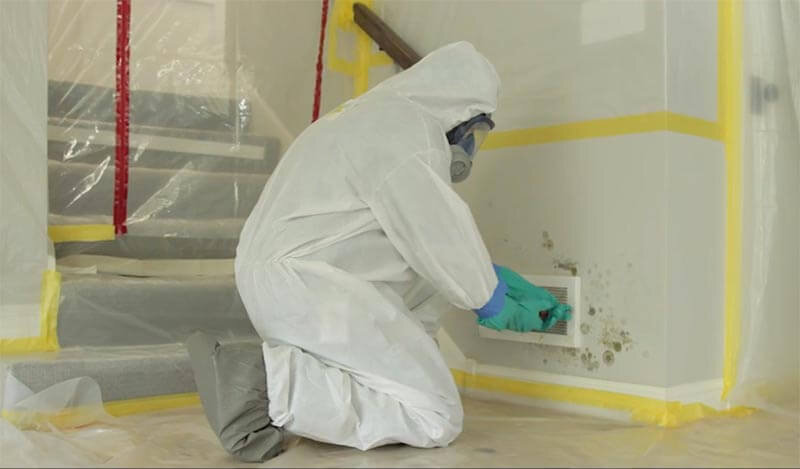Your Ultimate Overview to Blog Post Mold Remediation Strategies
Navigating the world of post-mold remediation methods is a meticulous process that demands focus to detail and a comprehensive understanding of the details entailed. In the after-effects of mold invasion, knowing how to properly remove the mold and avoid its reoccurrence is paramount for keeping a healthy and balanced indoor setting. From selecting the appropriate cleansing and sanitizing methods to implementing approaches for long-lasting mold prevention, each action in the removal trip plays a vital role in making sure a successful end result. As we start this exploration of post-mold removal strategies, we will reveal the essential strategies and ideal methods that can assist you recover your space to its pre-mold condition and safeguard it against future mold risks.
Understanding Post-Mold Removal Process
After finishing the mold remediation process, it is essential to comprehend the post-mold remediation strategies that are essential to make certain a thorough and efficient cleaning. When the mold and mildew has been eliminated, the following step entails cleaning and disinfecting the influenced locations to avoid any regrowth of mold.
Moreover, conducting a last inspection post-remediation is important to ensure that all mold has been successfully removed. This evaluation should involve an extensive visual check in addition to possibly air sampling to verify the lack of mold and mildew spores airborne. If the assessment exposes any lingering mold, added removal might be essential. Informing occupants on preventive actions such as controlling wetness degrees and promptly dealing with any kind of water leaks can help maintain a mold-free atmosphere.
Effective Cleaning and Disinfecting Approaches

Protecting Against Future Mold And Mildew Development

Relevance of Proper Ventilation
Proper ventilation plays a vital duty in stopping moisture buildup, a key aspect in mold growth within interior settings. Reliable air flow systems help remove excess humidity from the air, lowering the chances of mold spores finding the dampness they need to germinate and spread out. Without sufficient ventilation, indoor rooms can become a breeding ground for mold, leading to possible health and wellness risks and structural damage.
By ensuring proper air blood circulation, air flow systems can also assist in drying damp locations much more promptly after water damage or flooding cases, further preventing mold growth. Post Remediation Inspection near me. In areas like washrooms, attic rooms, basements, and cooking areas where moisture degrees often tend to be higher, setting up and maintaining effective air flow systems is important in stopping mold and mildew infestations

Tracking and Upkeep Tips
Provided the important role that correct ventilation plays in stopping mold and mildew growth, it is necessary to develop efficient tracking and maintenance suggestions to make certain the continued capability of air flow systems. Regular assessments of air my blog flow systems ought to be conducted to look for any type of signs of clogs, leaks, or malfunctions that might hamper proper airflow. Monitoring humidity levels within the home is also essential, as high moisture can add to mold development. Installing a hygrometer can help track moisture levels and sharp homeowners to any type of spikes that may require interest. Additionally, guaranteeing that air filters are on a regular basis cleansed or replaced is essential for preserving the efficiency of the air flow system. Carrying out a routine for regular maintenance tasks, such as air duct cleansing and a/c system evaluations, can assist avoid problems prior to they rise. By staying aggressive and conscientious to the problem of ventilation systems, building owners can efficiently reduce the risk of mold regrowth and preserve a healthy and balanced interior environment.
Conclusion
To conclude, post-mold removal strategies are vital for ensuring a tidy and secure environment. Recognizing the process, implementing efficient cleansing and disinfecting methods, preventing future mold development, maintaining appropriate ventilation, and routine monitoring are all crucial action in the remediation process. By adhering to these guidelines, you can successfully remove mold and mildew and stop its return, functioning or promoting a healthy and balanced living area for all residents.
In the consequences of mold and mildew invasion, recognizing just how to successfully eliminate the mold and mildew and stop its reoccurrence is extremely important for preserving a healthy interior setting. As soon as the mold and mildew has actually been removed, the next action entails cleaning and disinfecting the influenced areas to stop any type of regrowth of mold and mildew - Post remediation mold testing near me. After eliminating visible mold and mildew growth, it is next page critical to clean up all surface areas in the affected location to eliminate any staying mold removal products for wood mold and mildew spores. To further improve mold prevention actions, it is essential to attend to underlying issues that originally led to mold and mildew advancement.Provided the essential function that correct ventilation plays in stopping mold development, it is important to establish reliable surveillance and upkeep pointers to guarantee the ongoing performance of ventilation systems